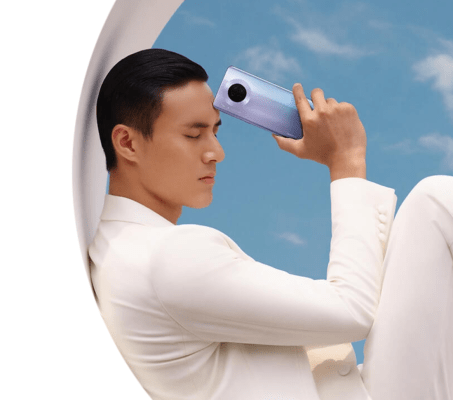We’ve known this day would come for a long time now. Over the past several months, however, it feels like it has arrived in slow motion. Seemingly legitimate concerns over security and sanction violations have been muddled by chest-puffing and braggadocio and large-headed leaders promising to do deals. Executives were arrested in Canada and the company was added to a trade blacklist, only to be given a temporary reprieve.
This morning, in spite of it all, Huawei unveiled its latest flagship. The Mate 30 Pro is a beast of a smartphone, as we’ve come to expect from the Chinese electronics powerhouse. It has a quartet of cameras aligned in a ring up top. On the flip side, a 6.53-inch flexible OLED hugs the corners of the handset, boasting an always-on functionality — the long-awaited new feature that served as the central selling point for Apple’s latest wearable.
From a 100-foot view, however, it seems inevitable that no one will remember the handset for its screen or cameras or beefy 4,500mAh. It’s what’s missing that’s the most notable. The Mate 30 and Mate 30 Pro don’t use full Android, but rather an open-source version of the operating system based on it. More importantly, they are missing Google’s fundamental apps like Gmail, Maps and Chrome, a central part of the Android experience. Worse yet, there’s no Google Play Store to download them.
The solutions for now are mostly stop-gap. There’s a Huawei-branded browser that lets you download apps through a Huawei-branded channel. There are 45,000 or so. Not bad, but nowhere near the 2.7 million you’ll find via Google Play. There will be better solutions to these, but they take a lot of time and money. Huawei’s got plenty of the latter, though the former has been the cause for some debate amongst those following the company.
Google’s Android experience has been publicly refined for more than a decade now. Google’s built an operating system and app ecosystem on-par and in someways better than iOS, in spite of Apple’s head start. And the story of Android is littered with tales of smartphone manufacturers attempting to “improve” upon the operating system with third-party skins and other “innovations.”
There’s little question that Huawei has the resources to build a serviceable alternative, given a long enough timeline. The real question, however, is twofold:
- How long of a runway is required?
- Is the company’s hardware strong enough and has it built up enough goodwill to convince users to stick with it in the meantime?
It’s worth noting that Huawei has seen an uptick in sales during this trade war. Figures provided by analyst group Canalys noted a 24% year over year uptick in sales for the first half of 2019. That figure runs in stark contrast to smartphone sales that have been otherwise listless across the board. Among the driving forces noted by the firm is a sense of patriotism driving sales in its native China. Huawei has tailored an ad campaign to play upon those notions.
The notion of patriotic purchases is hardly a new one during wars — trade and otherwise. It’s hard to say, however, how long such a campaign can be sustained. Especially with countless other Chinese manufacturers in the market. It does seem possible that the Chinese government will put some of its considerable weight behind the company, even as Huawei continues to deny ties between the two parties.
Huawei has continued to be a rocket ship in spite of being repeatedly barred from the U.S. — first through carriers, then big-box stores and then a trade blacklist. But a lack of access to the fundamentals of Google’s offerings changes that math considerably. Now it’s not just a question of regional access, it’s also a problem of the overall quality of the offering. Patriotic purchasing is one thing when the product is on-par with the competition, but another thing entirely when a trade blacklist leaves it lacking in some fundamental way.
Huawei’s done a fine job going the Apple route and developing its own components in-house. The company’s already building its own 5G chips and processors that can compete with the latest silicon from Qualcomm. It has also made a massive investment in software. Earlier this week, the company announced plans to invest $1.5 billion in a developer program to build its own ecosystem that can compete with Google’s.
Unveiled in August, HarmonyOS felt like a baby step in that direction. The offering, which is currently designed for IoT, wearables and low-end handsets, was a disappointment for those who suspected the company might have a full-on Android competitor waiting in the wings. There’s no doubt Huawei’s got its best people working on something, but ramping up to Android levels will require time.
Huawei has set its own investment timeline at five years. That’s an eternity in the world of consumer electronics. Leaders and political climates change. Who knows, maybe this will be a distant memory by then. Though Huawei will likely continue to develop its own contingency plan regardless of how the current trade situation shakes out.
Either way, the Mate Pro is the smartphone to watch in the coming months. The impact of the device will have profound ramifications for Huawei’s future.
